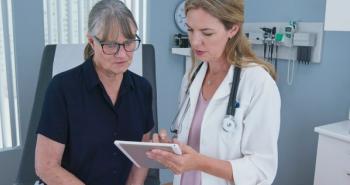
Learning To Do With (Far) Less: What it Takes to Become a Community Psychiatrist
One doctor shares his story of becoming a community psychiatrist.
CLINICAL REFLECTIONS
In the 7th month of my first year of psychiatry residency, quite a surprise waited for me in my mailbox.
There was an official looking letter from the Selective Service System, from my Draft Board in the Bronx. It announced I had been drafted into the US Army to serve my 2 years as a conscientious objector (CO) and was to report the following week to meet with the Board. It was 1971 and the Vietnam War needed doctors. That was my introduction to community psychiatry.
I obediently drove some 200 miles to the Bronx and appeared before the Board. They did not know what to do with me since, remarkably, they said I was their first CO. After drilling me with questions, I was dismissed and told they would be in touch. After a second meeting, no different than the first, I soon received another official letter detailing the conditions of my 2-year CO service.
Namely, I was to propose, within a month, a job at no higher pay than a psychiatry resident, at least 50 miles from where I was living, and which clearly was a public service. Or they would find one for me (not a sane alternative to take).
I hustled, looking at many ads. I applied for one job by phone and almost immediately had a job offer from the Aroostook County public mental health clinic. I should have known how desperate they were offering me, sight unseen, a position. I accepted the position, and my Draft Board approved.
Aroostook County is 298 miles, a nearly 11-hour drive, from where I was living. It is a county the size of Connecticut, then with a population of 100,000 individuals. It is the farthest northeastern county of Maine, bordering on Canada. Aroostook was a federally declared, economically impoverished, and medically underserved area, especially psychiatrically underserved. The diversity of its population ranged from farmers; to French Canadians; to native Americans; to the near-to-feral men who were hired by the timber companies to live on, arm themselves, and protect the forests from outside logging; to the Air Force families at nearby Loring Air Force Base (now closed).
Evidently all that must have been clear to my Draft Board. Not quite like being sent into the jungles of Southeast Asia, but still meriting “alternative service,” as it was called. Though I can assure you, that was not clear to me.
I was going to work in one of the early community mental health programs that President John Kennedy had championed. I took a leave from the residency program, which of course it granted, because I was not doing so to go skiing but rather upon the command of the government.
But I had no idea what I was in for, nor that my time as a community psychiatrist was to be the most transformative—and thus the best—training experience in my career.
My wife and I packed up and drove very north to my new job. After a bit, we arrived in Fort Fairfield, Maine, where the clinic was located in potato country. Endless fields with small white flowers ran to nearby horizons. It was spring. Not a bad time to be in an area where winter nighttime temperatures could fall to -40 °F, where I had to thread a small, electric rod into the opening of the oil tank to keep the engine from dying overnight from the cold.
Right away, I went to meet with the clinic director, who was very welcoming. I guess he needed to be, because the clinic services in 3 towns (2 in addition to Fort Fairfield), 1 at the Canadian border, as well as 10 psych beds in the small community general hospital, all had no psychiatrist—not even a general practitioner.
The clinic was funded for 2 psychiatrists. Its single psychiatrist had lost his medical license because of the serious problems he had with alcohol abuse. So, then there were none! Until me, now the only psychiatrist in the county.
There were 3 aspects of my new, community psychiatry job that made for my unrivaled training.
First, I had no supervisor, not even a consultant. As unnerving as that was, 7 months into my training, I had to deliver as best I could when I faced utterly novel clinical demands every day with highly diverse, dispersed populations in the 3 towns; the vast, unpopulated logging forests; and with the individuals of the local Native American reservation.
I was a green not-even-yet-a-psychiatrist (I had a license from my 1 year medical internship) who, when looking around, saw no help. This made me a life-long, self-taught student with the confidence to do what he could, expecting that would be far from ideal and replete with mistakes, which I had to accept, not beat myself up over, and move on to keep learning. It was me or nothing. I did not feel special, but I felt necessary, called upon as a doctor. I had no place to run from my Draft Board, new Northern Maine community, and my medical oath to do what I could.
Have you had that experience? Not that I would wish it upon you. I felt what it must be like to be sent to survival camp. I was changed, even when I did not know it. Changed for the rest of my life as a doctor. No doubt a factor in my taking a series of professional jobs that some might regard as impossible.
Second, of course, central to surviving and getting things done, I had to learn whom I could turn to, which was not an emergency room or an attending. For example, the small police departments in each of the towns, the county Sheriff, and the state troopers for all in-between. I saw patients in the jails or brought to my inpatient unit at the hospital, a stone’s throw from the clinic. They had been arrested because of their danger to others and themselves. I had to earn the protection and help of the officers of the law, by being helpful to them, with whatever mess they were responding to. When hospitalizing seriously mentally ill individuals with guns and other weapons—and little reluctance to use them—I had to turn to the locked safety of the state hospital, 3 hours south. Transportation? The State Troopers, who, if you pardon the pun, were troopers.
Another example is families. They are vital for many, the most enduring of supports for a person with a serious or chronic mental illness. But they often are burnt out from trying, angry or frightened, or hopeless. I was to learn how families can make a great difference in the life course of a person with a chronic mental disorder. Families surprised themselves in finding the reserves they still had when they were respected and guided by clinicians like you and me. My first book for the general public, The Family Guide to Mental Healthcare, found a significant, unmet area of need and still sells to this day, 10 years after it was published.
Then there are the nurses. Nurses run acute care and hospital services, not doctors. They are there 24 hours a day, in communication with one another, and far more trusted by patients and families than doctors. They do not focus on lab and imaging studies, like doctors increasingly do; they focus on the patient. You better learn this if you wish to do your job and help individuals with acute illness recover, not to mention to save your ass.
Being a community psychiatrist takes courage, resolve, creativity, persistence, and determination to not let health care corporations make demands that put profits before patients. When they do and you go along, wittingly or not, you too become a victim, now termed moral injury.
There is one more essential quality necessary in the fashioning of a community psychiatrist—namely, a positive view that individuals with serious mental illness can achieve lives of contribution and dignity. These patients are not fated to a dim, dark, and disabled life if we stand with them in a recovery that seeks and pursues the light ahead.
Dr Sederer is a psychiatrist, public health doctor, and non-fiction writer.
Newsletter
Receive trusted psychiatric news, expert analysis, and clinical insights — subscribe today to support your practice and your patients.




